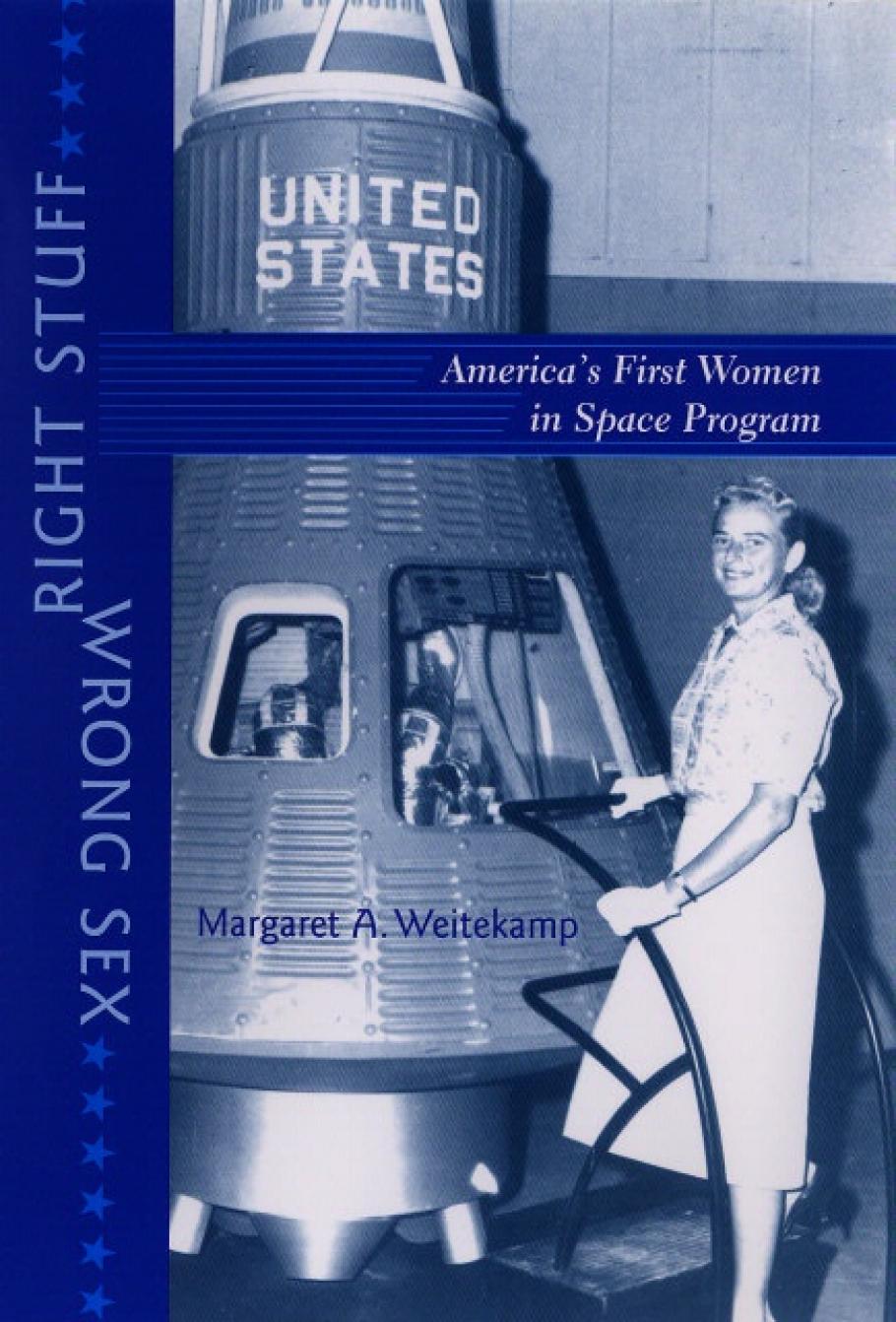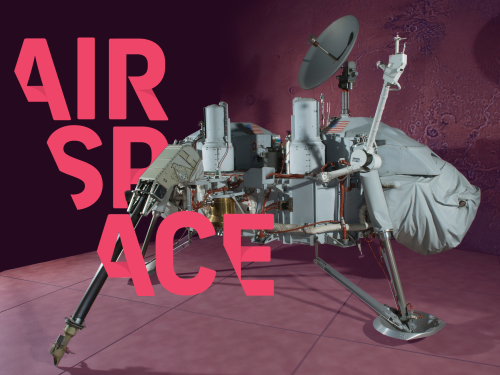
“A Company of Scholars”: A Brief History of the National Air and Space Museum’s Fellowship Program
Oct 23, 2012
Most people know the National Air and Space Museum as the premier location in the United States, and perhaps in the world, for the display of the artifacts of aerospace history. Not so well publicized is the fact that the Museum is also home to what former Smithsonian Secretary Dillon S. Ripley called “a company of scholars … a small university that awards no degrees.” Ripley’s comments refer to his strong belief that the Smithsonian should be a place where scholars from around the world conduct research and exchange ideas with each other and with Smithsonian researchers. The Smithsonian has indeed become such a place and so has the National Air and Space Museum, most particularly in regard to its funding of and support for outside researchers who come here under the auspices of the Museum’s fellowship program. Guggenheim Pre- and Post-doctoral Fellowships In the mid-1960s, the Daniel and Florence Guggenheim Foundation pledged $250,000 (roughly equivalent to $1.7 million in today’s currency) to support three projects: an exhibition about the Guggenheim family’s longstanding support of aeronautical research and education; a public lecture series that featured prominent figures in aerospace history; and a fellowship that would allow graduate students to do historical research at the Museum.
Over the years, the Guggenheim Fellowship has sponsored such distinguished aerospace historians as Richard P. Hallion, among others. Hallion’s book, Legacy of Flight: The Guggenheim Contribution to American Aviation (Seattle: U of Washington P, 1977), was the product of an appointed Guggenheim grant at the Museum. Another early former Guggenheim Fellow, Joseph Corn, wrote his groundbreaking The Winged Gospel: America’s Romance with Aviation (New York: Oxford UP, 1983), the first true cultural history of aviation, at the Museum. Von Hardesty, a Guggenheim Fellow here (1978-79) began work on his pioneering work Red Phoenix: The Rise of Soviet Air Power, 1941-1945 (Washington, D.C.: Smithsonian Institution Press, 1982). This work was later revised as Red Phoenix Rising: The Soviet Air Force in World War II, Modern War Studies (Lawrence: University Press of Kansas, 2012). Hardesty later became a curator in the Aeronautics Department, with responsibility for Russian and Soviet aircraft. In later years the Guggenheim fellowship was awarded competitively, and is now available to pre-doctoral graduate students and to Ph.D.s who are within seven years of having been awarded their degree. Jenifer Leigh Van Vleck, a recent Guggenheim Predoctoral Fellow (2006-2007) from Yale University, wrote her doctoral dissertation, “No Distant Places: Aviation and the Global American Century,” which is soon to be published by Harvard University Press. Van Vleck is an Assistant Professor, Department of History, Yale University. Phil Tiemeyer, a recent Guggenheim Postdoctoral Fellow (2009-10) from Philadelphia University worked on the manuscript for his Plane Queer: Labor, Sexuality and AIDS in the History of Male Flight Attendants, which will be published by University of California Press in February 2013. Charles A. Lindbergh Chair in Aerospace History
Our most distinguished fellowship is the Charles A. Lindbergh Chair in Aerospace History. Originally, this award was an appointment made by the Museum’s Director, but is now competitive and open to senior scholars with a distinguished record of publication who are or are soon to be at work on books in aerospace history. The first holder of the Lindbergh Chair was Charles Harvard Gibbs-Smith, a pioneer in the history of early flight. A subsequent recipient was the late Ron Davies, who held the chair from 1981 to 1983, who then become our curator of air transportation, a post he held just up to the time of his death in 2011. His last book, Airlines of the Jet Age: A History (Washington, D.C.: Smithsonian Institution Scholarly Press, 2011), was published just before his death. The Lindbergh Chair for 2012-13 will be Stuart Leslie, author of The Cold War and American Science: The Military-Industrial-Academic Complex at MIT and Stanford (New York: Columbia UP, 1993). Dr. Leslie will examine six “iconic” architectural spaces that he believes transformed perceptions of the space age. Ramsey Fellowship in Naval Aviation History
The Ramsey Fellowship was the result of a bequest by Juanita Ramsey, the widow of Admiral Dewitt Clinton Ramsey, who had commanded the carrier USS Saratoga during World War II, and who later became commander-in-chief of the Pacific Fleet before he retired. Paul E. Garber, whose pioneering efforts helped to found the National Air and Space Museum, was the first holder of the Ramsey Fellowship, which was an appointed position. Another appointed Ramsey Fellow was E. T. Wooldridge, who held the position from 1990 to 1994 and who was a curator in the Aeronautics Department and subsequently Chair, and later Assistant Director for Museum Operations. A later appointed holder of the Ramsey Fellowship was Donald D. Engen, a career naval aviator and officer, and former head of the National Transportation Safety Board, who became the Director of the Museum in 1996. Engen wrote his memoir Wings and Warriors: My Life as a Naval Aviator (Washington, D.C.: Smithsonian Institution Press, 1997), while a Ramsey Fellow. During Engen’s time as Director, the Ramsey Fellowship became a competitive grant. Other Ramsey Fellowship holders were: retired U.S. Navy Admiral Gerald E. Miller, who wrote Nuclear Weapons and Aircraft Carriers: How the Bomb Saved Naval Aviation (Washington, D.C.: Smithsonian Institution Scholarly Press, 2001) during his tenure; Norman Polmar, who wrote Aircraft Carriers: A History of Carrier Aviation and Its Influence on World Events, Vol. I: 1909-1945 (Washington, D.C.: Potomac Books, 2006) during his tenure, and Thomas Wildenberg, who wrote All the Factors of Victory: Adm. Joseph Mason Reeves and the Origins of Carrier Air Power (Washington, D.C.: Potomac Books, 2005) during his tenure. The National Air and Space Museum is no longer accepting applications for the Ramsey Fellowship. The funds have been reprogrammed with the intention of providing funding for an eventual curatorial chair in naval aviation history. A.Verville Fellowship The A. Verville Fellowship was named for Alfred V. Verville, an innovative pioneer aviator and aircraft designer and manufacturer. The Verville Fellowship is a competitive grant that is open to academics and non-academics alike, who are interested in analyzing major trends, developments, and accomplishments in aerospace history. Among the recipients are Dik A. Daso, former curator of military aircraft at the Museum, who worked on Hap Arnold and the Evolution of American Air Power (Washington, D.C.: Smithsonian Institution Press, 2001); Asif A. Siddiqi, who wrote The Red Rockets’ Glare: Spaceflight and the Soviet Imagination (New York: Cambridge UP, 2010), and Christine R. Yano, author of Airborne Dreams: “Nisei” Stewardesses and Pan American Airways (Durham, N.C.: Duke University Press, 2011). Center for Earth and Planetary Studies Postdoctoral Program The Center for Earth and Planetary Studies (CEPS) is the scientific research unit at the Museum. Most of the research in CEPS focuses on geologic processes that have shaped the surfaces of rocky bodies in the solar system, including the Earth. CEPS has supported 22 post-doctoral researchers since the program began in 1994, drawing well-qualified candidates from a variety of U.S. and international universities. External grants, mostly from NASA, fund most of the salary, conference travel, field work, and other expenses. One fellowship is supported by a Smithsonian endowment. CEPS post-docs are able to submit research proposals for external funding as Principal Investigator, and many have funded a substantial portion of their own time, as well as subsequent careers in research. To date, CEPS post-docs have published 46 peer-reviewed journal articles and chapters as lead author, and pre-doctoral research assistants have authored another 25. Post-docs have received 30 research grants totaling over $2 million. Two have served as participating scientists on three NASA planetary missions (Lunar Reconnaissance Orbiter, Mars Reconnaissance Orbiter, and the Dawn mission to Vesta), and others have supported missions by working with a CEPS staff scientist on a mission team. Five of the 22 CEPS post-docs since 1994 are currently in residence. Of the 17 who have completed their appointments, seven are now university professors, six work for a non-profit research institute or university on grant-funded science projects, three have pursued careers in government, and one is in private industry. The Aviation Space Writers Foundation Award
In April 2000, the Smithsonian Institution and the National Air and Space Museum accepted a financial gift from Aviation Space Writers Foundation. In exchange for the gift, the Museum would “support financially the work of a journalist, writer, or not-for-profit organization that is engaged in research and writing on significant aviation and space issues, developments or achievements, the publication of which may increase or enhance public awareness and knowledge of aviation, space flight, or the aerospace industry.” The grant also includes archival projects and the “product created as the result of the grant award must be in any form suitable for potential public dissemination in print, electronic or broadcast or other visual medium, including but not limited to a book manuscript, a video or film script, or monograph.” The award is given every two years in even-numbered years (2012, 2014, etc.). A past recipient of the award (in 2002) was Margaret Weitekamp for work on her book Right Stuff, Wrong Sex: The Science, Culture, and Politics of Lovelace’s Woman in Space Program, 1959-1963. In 2006 Matthew Morrison received the award for a drama based on the life of Willie “Suicide” Jones, an African American professional parachute jumper and aerial stuntman. The current recipient (2012) is Rebecca Herman, a Ph.D. candidate at the University of California, Berkeley. Ms. Herman’s topic is the Pan American Airways World War II Airport Development Program, which will examine Pan Am’s development of airports in Latin America during World War II. All in all, our Fellowship Program has significantly advanced the scholarship in aerospace history, technology and science.
Acknowledgment I am indebted to a former Guggenheim Predoctoral Fellow, Dr. Alan D. Meyer, for his excellent research on the Museum’s Fellowship Program, which I have drawn on for this blog. Allan is now an Associate Professor in the Department of History at Auburn University. Thanks also to Dr. Rossman P. Irwin III of the Center for Earth and Planetary Studies for providing information about CEPS Postdoctoral Program.
Related Topics
You may also like
We rely on the generous support of donors, sponsors, members, and other benefactors to share the history and impact of aviation and spaceflight, educate the public, and inspire future generations. With your help, we can continue to preserve and safeguard the world’s most comprehensive collection of artifacts representing the great achievements of flight and space exploration.





